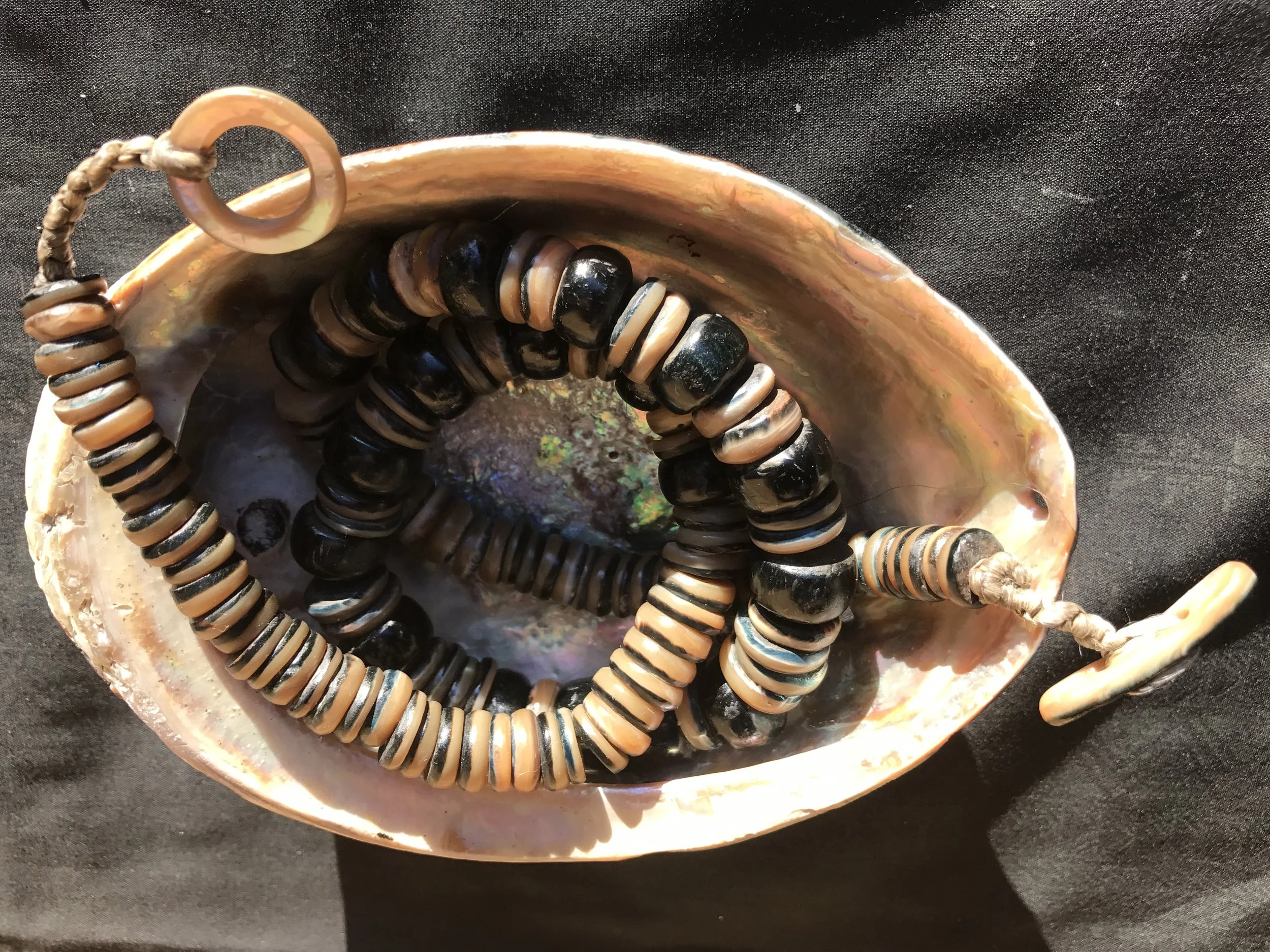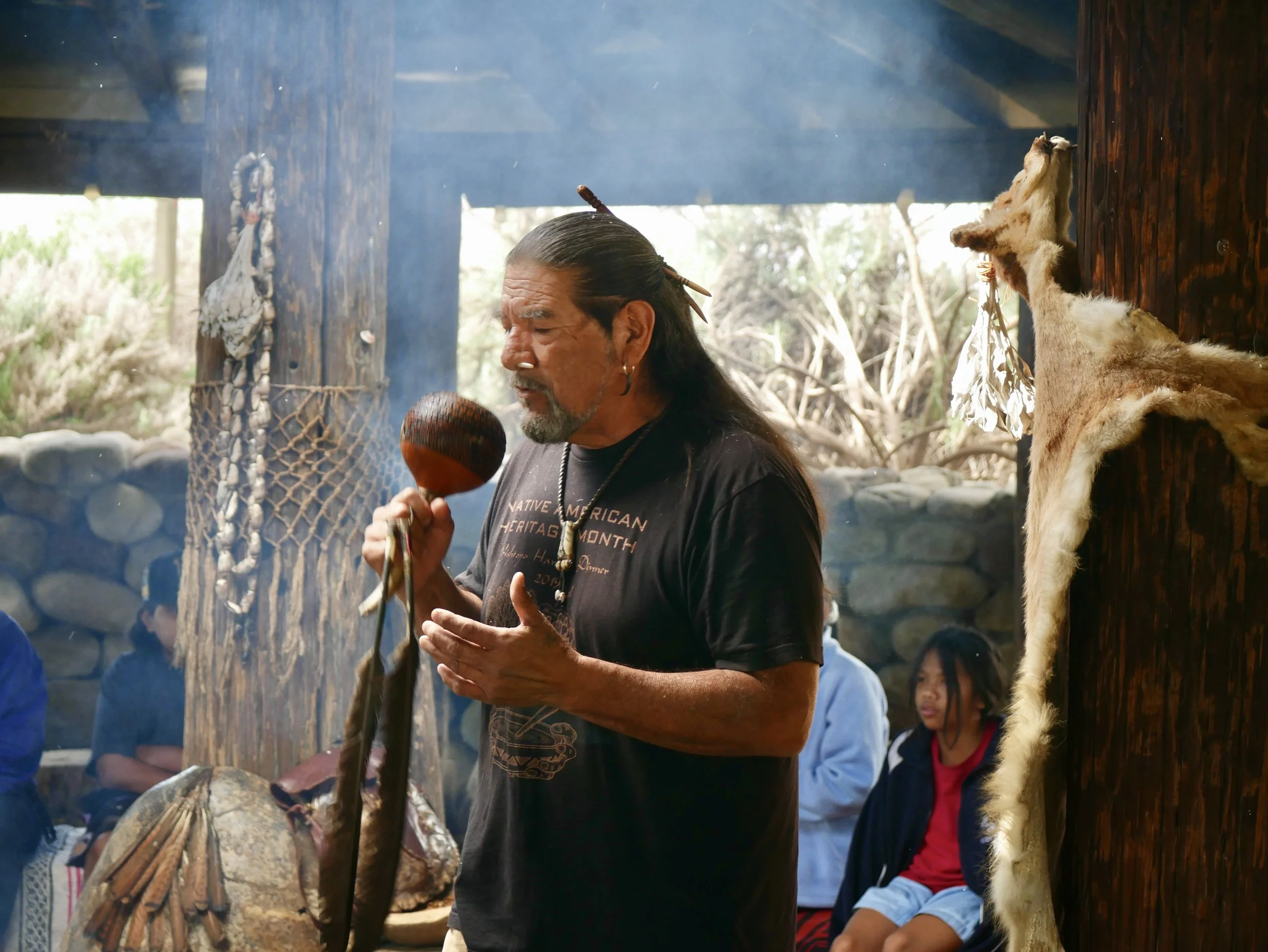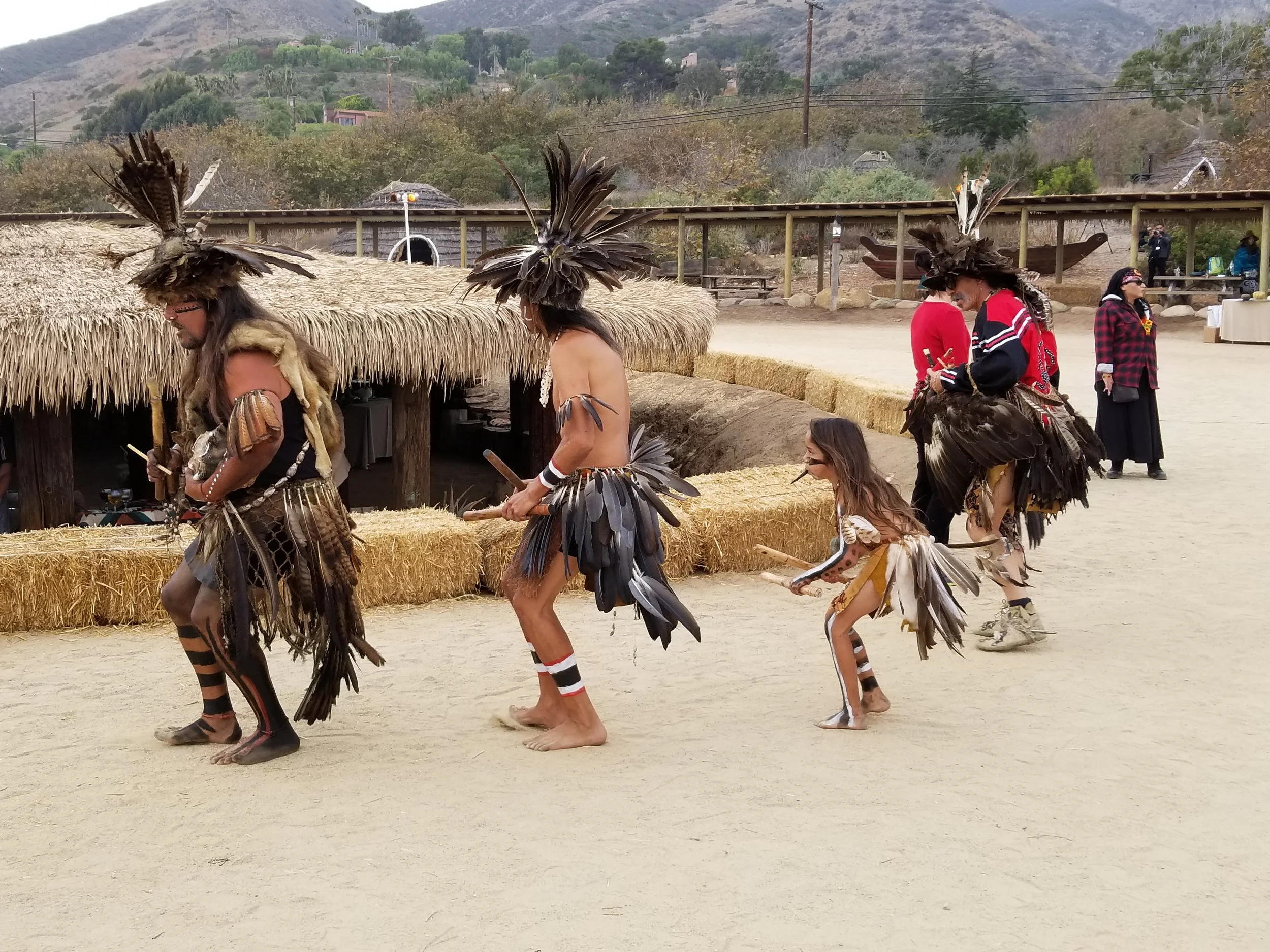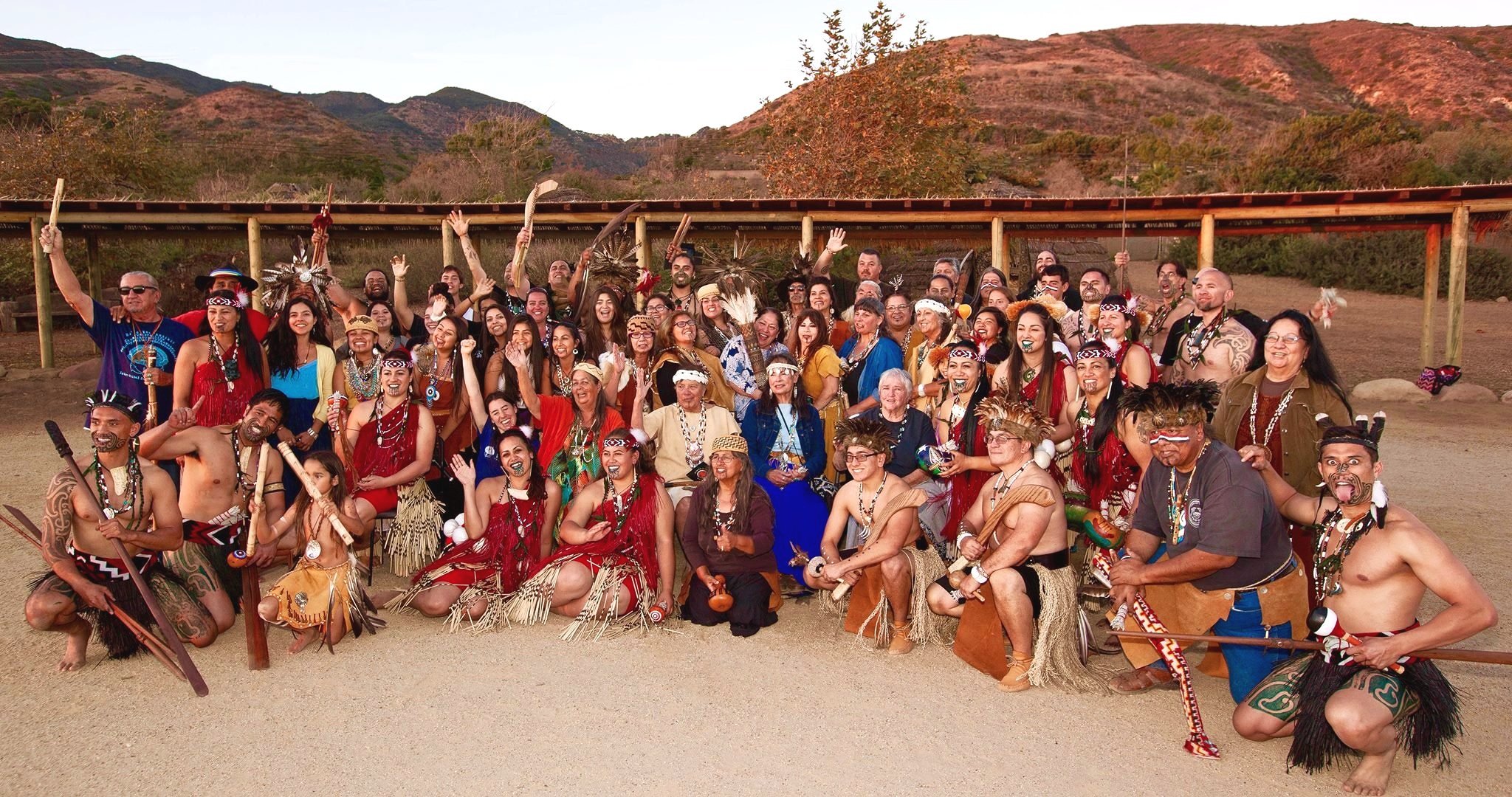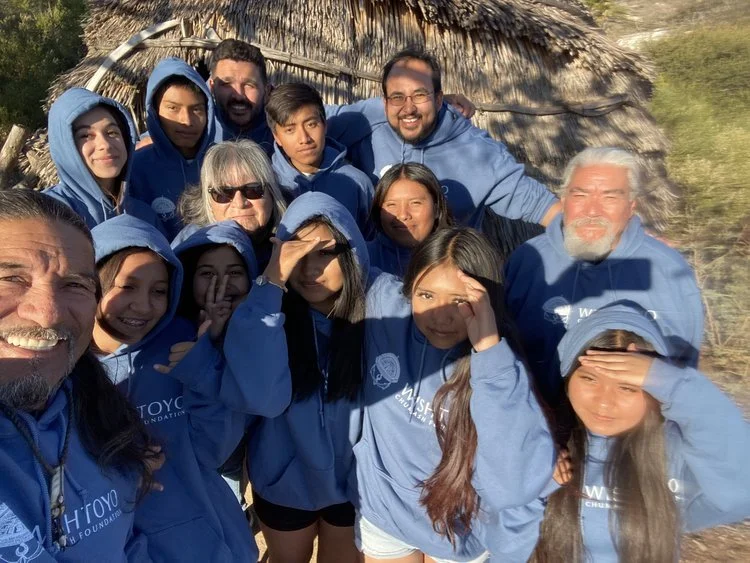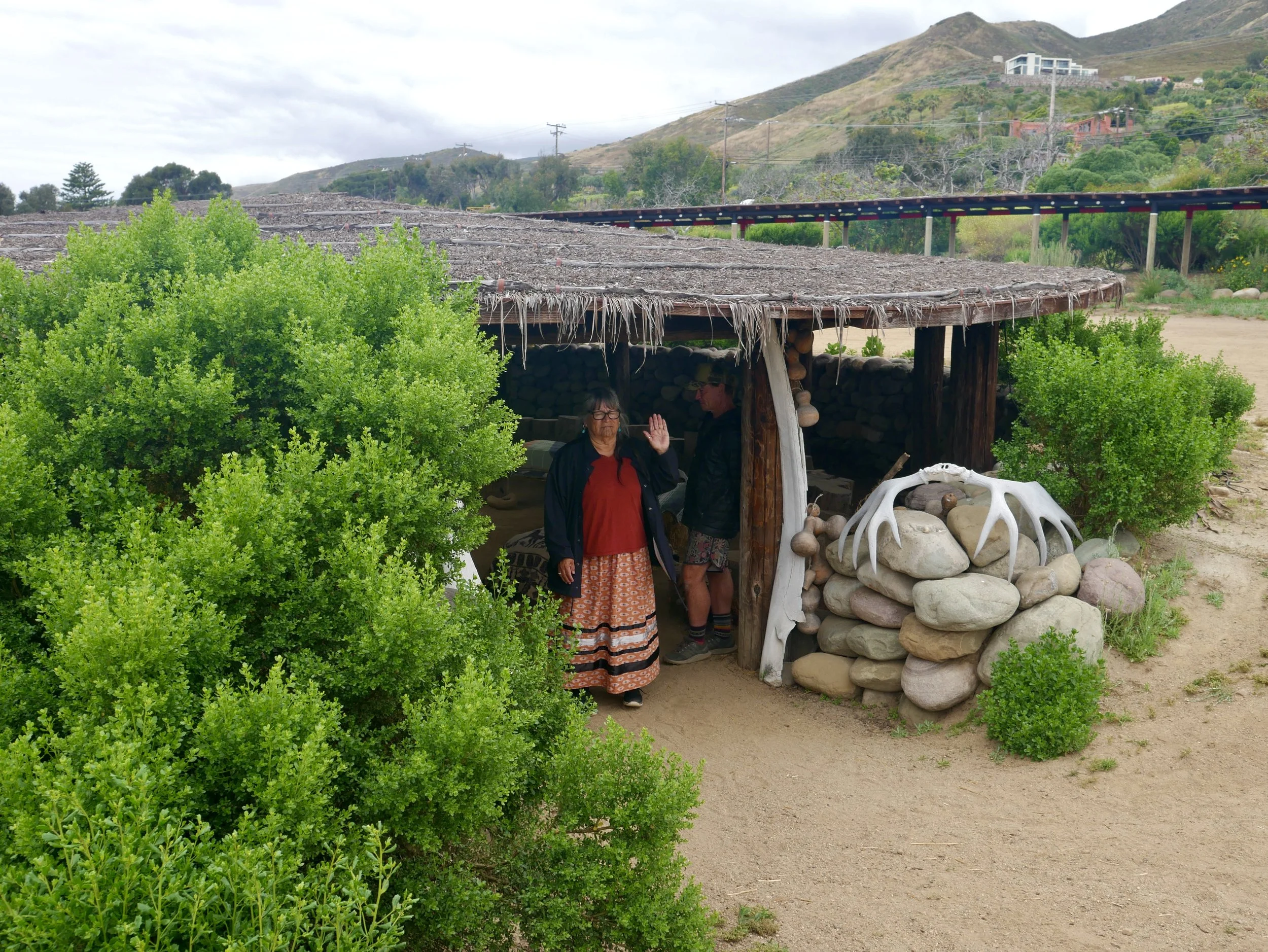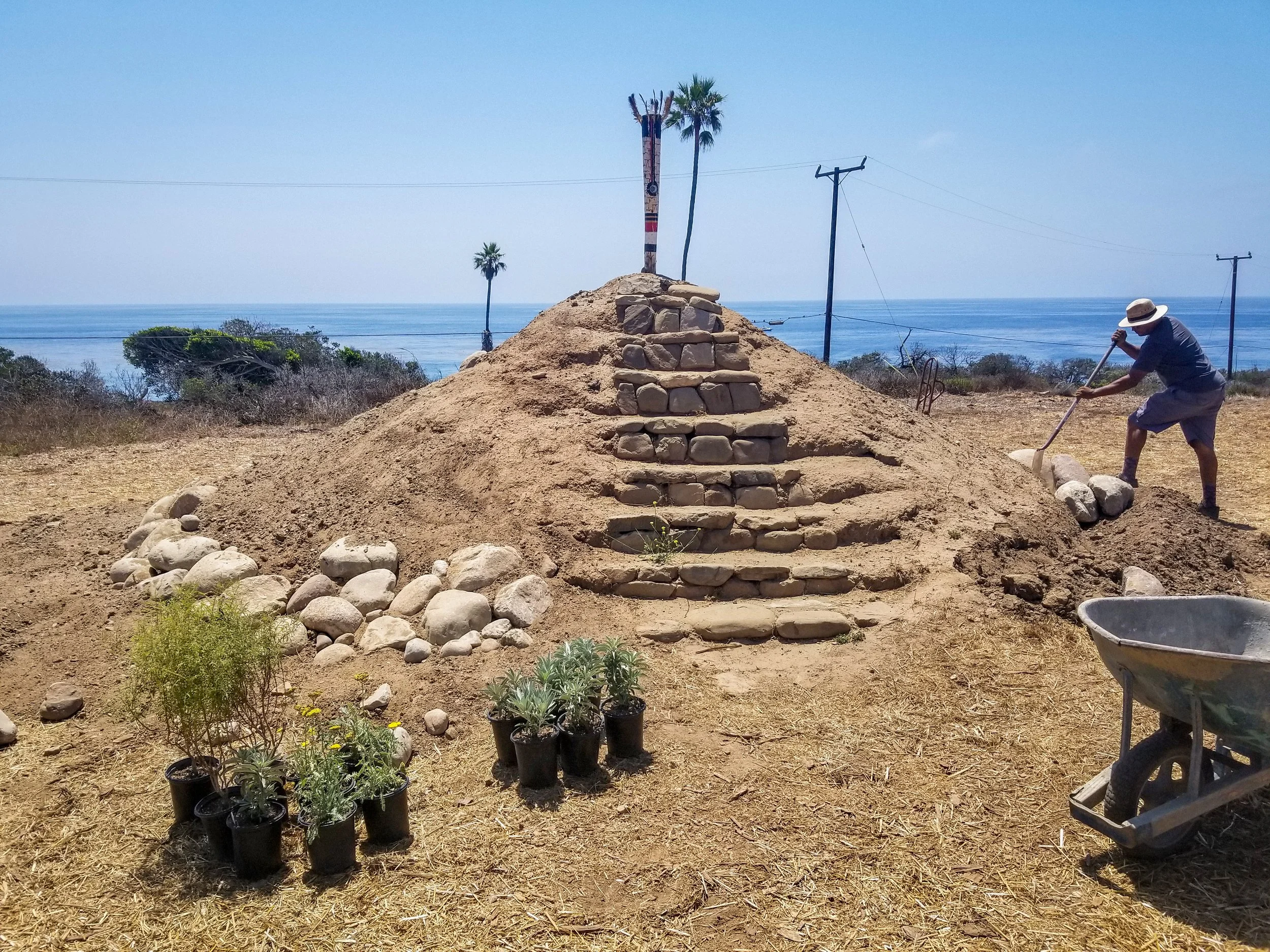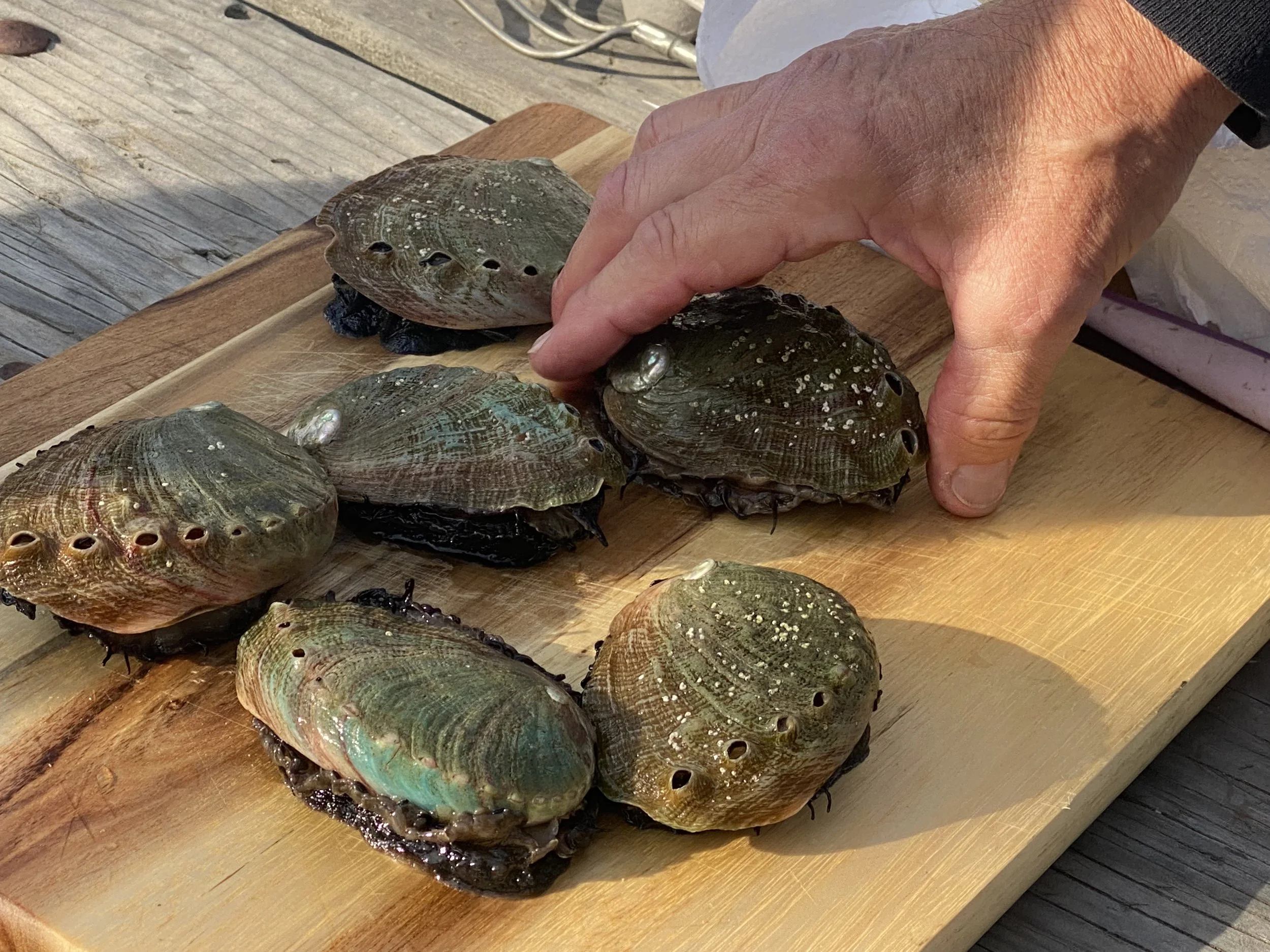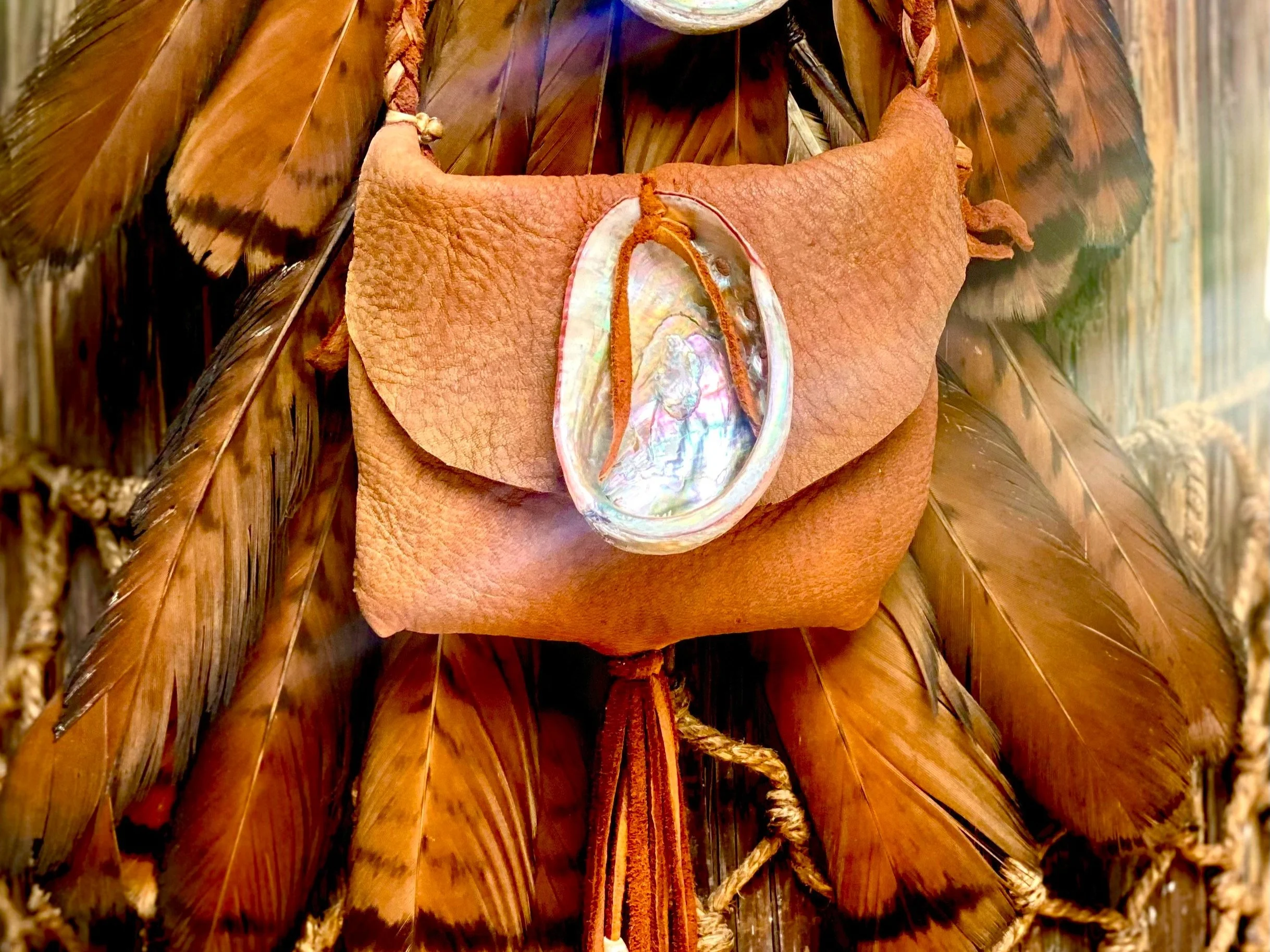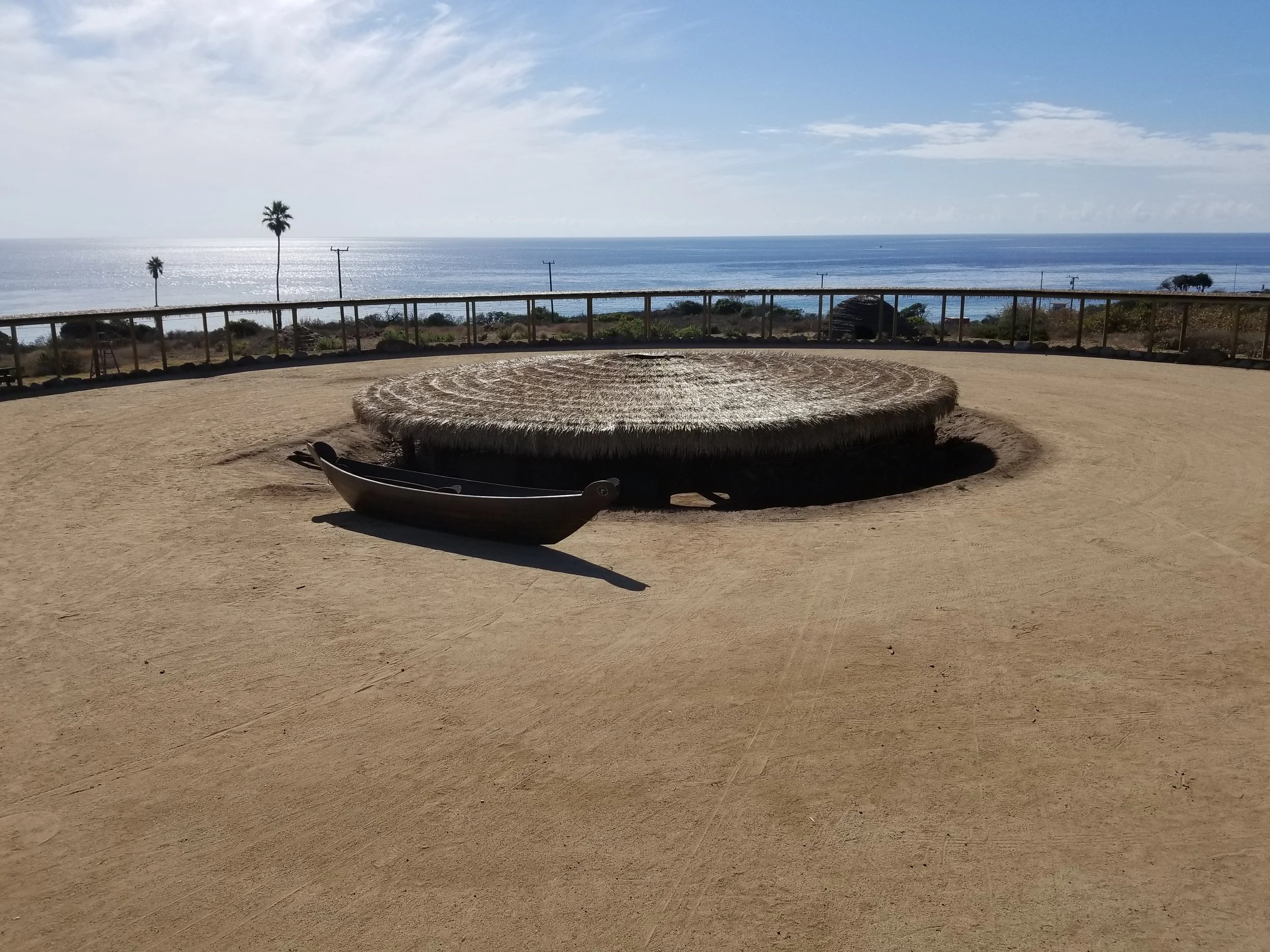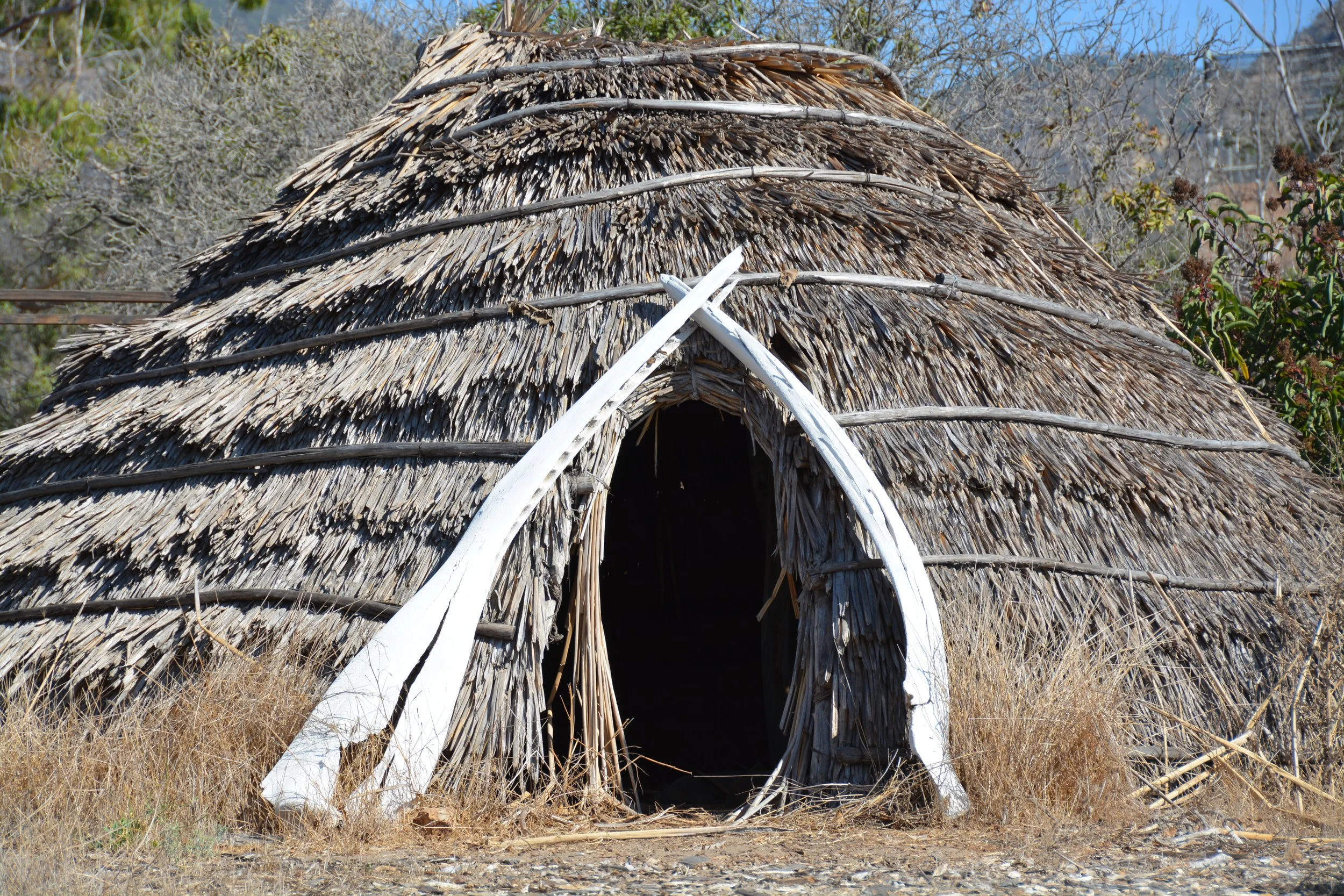
Wishtoyo Chumash Village
Wishtoyo’s Chumash Village is at the heart of our programming, serving the Chumash community, natural and cultural resources, and the public at large.
The Village functions as an outdoor classroom, cultural gathering place, and scientific field site all in one. It houses traditional ’aps (tule and willow Chumash homes), a ceremonial circle and dancing grounds, and many material aspects of Chumash culture and lifeways. There is also a welcome center, an outdoor kitchen, and ample camping and classroom spaces.
This four-acre site nestled alongside Nicholas Canyon County Beach is the only living Chumash cultural village of its kind in Southern California, serving approximately 7,000 visitors per year.
Visitors and program participants receive an immersive learning experience that cannot be replicated in a school or museum facility. The Village is not an exhibit or simple recreation; rather, it is a living, active landscape that welcomes all.

Built upon a historical 8,000-year-old village site, Wishtoyo’s Village is a unique, traditional Chumash village overlooking the Pacific Ocean in Malibu—traditional Chumash territory.
Learning from the land of our ancestors to teach the next generation
History of the Village site
Wishtoyo’s village is the result of prayerful dedication, building a deeply intentional relationship with the area, and following internal traditional protocols within our culture. This special place is a sacred dream realized.
We commissioned a literature review and archaeological assessment of the project site, confirming the area is the historic home of Chumash Native Americans. Eight Chumash prehistoric archeological sites were recorded within a half-mile of the Village radius and artifacts were observed throughout the site. Prehistoric artifacts and burials indicate that occupation occurred as early as 4000-6000 BC. (Chester King, Archaeological Reconnaissance and Recommendations for Preservations of Archaeological Remains at Nicholas Canyon County Beach, April, 2001)
Building the Village
Wishtoyo utilizes traditional methods and materials in the construction of the Chumash Village with a goal of raising awareness of Chumash people's historical relationship and dependence upon the natural environment as a maritime people. With several completed 'ap 'ap (traditional dwellings), and more in progress, Wishtoyo has created an outdoor living history museum on the bluffs of Malibu overlooking the Pacific Ocean commemorating our ancestors who have thrived for thousands of years in Southern California as a maritime culture. Creating authentic Chumash dwellings - 'ap 'ap, a sea worthy canoe "tomol", tools, and handicrafts, in addition to providing cultural and environmental education to thousands of students annually, the Village is a gathering place for inter-tribal events, and public and private ceremonies and celebrations.
Stream Restoration
The massive habitat restoration of Nicholas Canyon Creek brings a broader opportunity to experience the natural resources upon which Chumash peoples have thrived. The freshwater stream, native plants, wildlife, and marine resources provide rich and diverse resources for food, medicine, clothing, shelter, tools and utensils to the Chumash.
Visitors can experience this special relationship to nature and develop their own personal connection at this ancient site.
The Chumash Peoples
Chumash People are considered one of the most complex non-agricultural societies. Our ancestors maintained the most intricate bead money system documented anywhere in the world. During the mission period, many Chumash adopted Spanish and other foreign surnames to hide their identity and avoid relocation to the Spanish missions. Since the Chumash had no written language (until recent years), the birth records identifying Chumash people is complex and incomplete. As a result, some long time residents with Latino, French, English and other foreign surnames in Santa Barbara, Ventura, Los Angeles and San Luis Obispo Counties today, can track their lineage of Chumash descent through oral and written history.
Community and Ceremony
The Village often serves as a sacred gathering space for people and events in our community, as well as inter-tribal events, and public and private ceremonies and celebrations.
It is an honor to provide warmth and welcome to all our relations on our ancestral lands. Being in relationship with the land means to live every day in ceremony.
Visiting the Village
The Wishtoyo Village is only open to the public for scheduled programs and events. Visit our Upcoming Events page for future opportunities.
Throughout the school year, we regularly provide educational programs for school groups through our Chumash Maritime Lifeways: Land and Water (CML) field trip. To learn more and to apply for a field trip, visit our CML page!
College/University groups may express interest/apply for programming here.

What People Are Saying
“This was an incredible experience to share with not only our students, but parents, teachers and our inner most selves. I cannot wait to be there again! What an amazing, important thing this organization is doing! Very, very touching. We all walked away better people for having been here and listened and LEARNED. Very, very grateful.”
— Sara Ritz Peyton
“Wishtoyo has become a second home to me, thanks to all the wonderful people who open their hearts to everyone who visits. Mati and Luhui love what they do, and the impact they have on the community is nothing but positive and important. They offered me a safe space to celebrate and practice my indigeneity. I love Wishtoyo!!!”
— Isa Elyana
“Un lugar muy bonito con mucha historia y enseñanza, tranquilidad y muy amables todos fui en paseo con la escuela y de verdad vale la pena visitar.”





